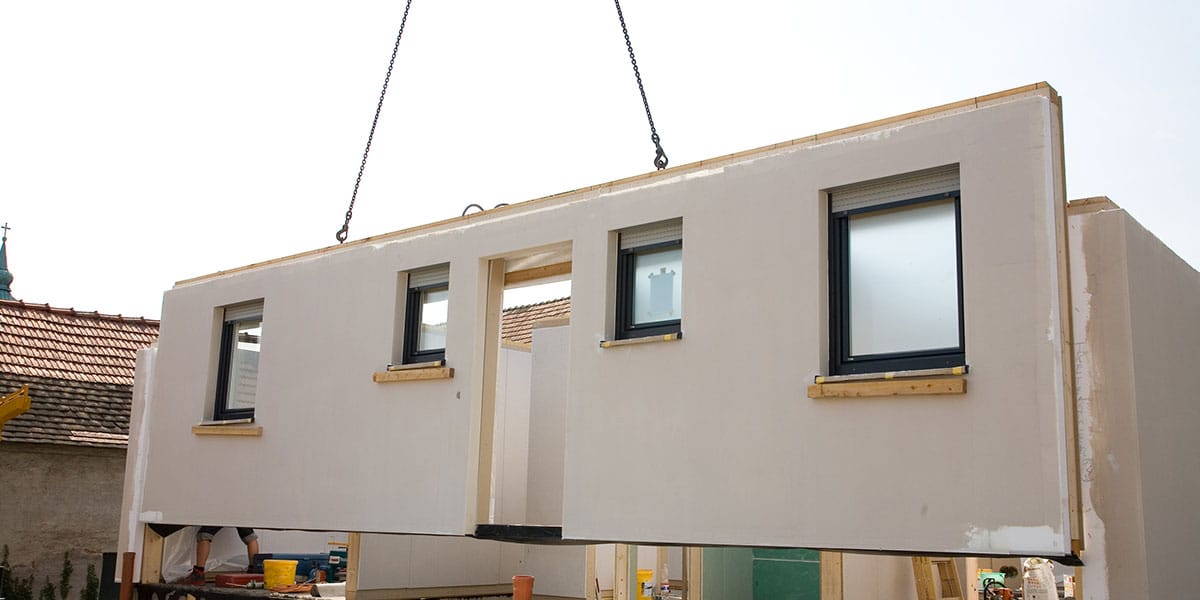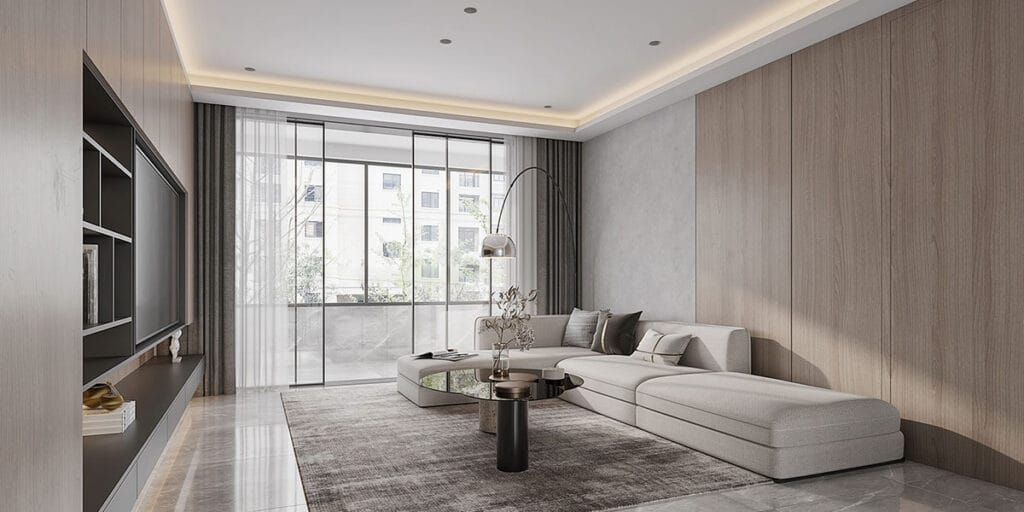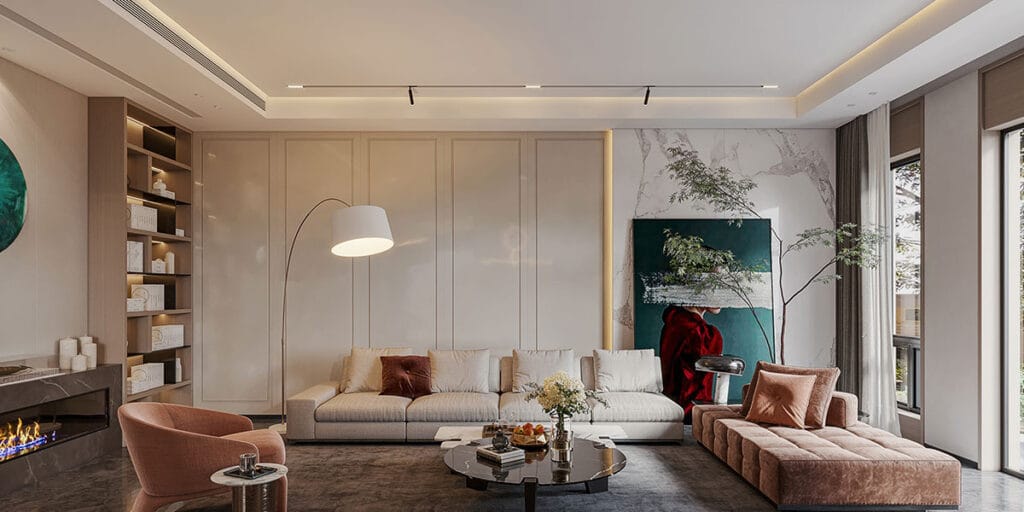
10 Apr Choosing Mold Resistant Drywall Made Simple
Table of Contents
Choosing Mold Resistant Drywall Made Simple is the key to creating a healthier and more durable home, especially in areas prone to moisture like bathrooms, kitchens, or basements. Mold-resistant drywall is designed to stop mold growth before it even begins, making it an essential choice for these spaces.
Here’s why it works so effectively: Mold requires water, air, and a food source to thrive. By using fiberglass mesh instead of traditional paper, mold-resistant drywall eliminates the food source. Additionally, its thicker layers act as a barrier, keeping water and air from penetrating the surface. Many modern options not only resist mold but are also water-resistant, making them a strong and reliable solution for your home improvement projects.
With Choosing Mold Resistant Drywall Made Simple, you can ensure a safer and longer-lasting living environment.
Key Takeaways
Mold-resistant drywall stops mold by using fiberglass, not paper. This removes the food mold needs to grow.
Spending on mold-resistant drywall saves money over time. It lowers repair costs and makes indoor air healthier.
Pick the right mold-resistant drywall for moisture levels. Use Purple Board for very wet areas and Green Board for less damp places.
Mold-resistant drywall makes walls stronger and lasts longer. This means fewer repairs are needed.
Talk to experts to choose the best drywall for your home. They can help with proper installation and better results.
Benefits of Mold-Resistant Drywall
Prevents Mold Growth
Mold-resistant drywall is your best defense against mold. It’s specially designed to stop mold from growing in the first place. How does it work? Traditional drywall uses paper, which mold loves to feed on. Mold-resistant drywall replaces that paper with fiberglass mesh. This simple change removes the food source mold needs to thrive. Plus, many options also include moisture-resistant properties, so water doesn’t seep in and create the damp conditions mold needs.
If you’re tired of dealing with mold in your home, this drywall is a game-changer. It’s perfect for areas like bathrooms or basements where moisture is common. By choosing this type of drywall, you’re not just protecting your walls—you’re protecting your health and your home.
Enhances Durability and Longevity
Mold-resistant drywall isn’t just about stopping mold. It’s also built to last. Many types, like PURPLE XP drywall, are made with a tough gypsum core and moisture-resistant paper. This makes them stronger and more durable than standard drywall.
Here’s what makes it stand out:
It scores the highest possible ratings on ASTM D3273 and ASTM G21 mold tests.
It absorbs less than 5% water, which means it holds up better in wet conditions.
This durability means fewer repairs and replacements over time. You’ll save money and enjoy peace of mind knowing your walls can handle moisture without breaking down.
Cost-Effective Solution for Homeowners
You might think mold-resistant drywall is expensive, but it’s actually a smart investment. While it costs about 50% more than standard drywall upfront, the long-term savings are worth it. A standard 4 x 8-foot drywall sheet costs around $9, while a mold-resistant one is about $12. Buying in bulk can lower these costs even more.
Think about it: You’ll spend less on repairs, replacements, and mold remediation. Plus, you’ll avoid the health risks and expenses that come with mold exposure. In the end, this drywall pays for itself by protecting your home and your wallet.
Improves Indoor Air Quality
Did you know the air in your home affects health? Mold-resistant drywall helps keep indoor air clean and safe. Mold and mildew release tiny spores into the air. These spores can cause allergies, asthma, and breathing problems. Stopping mold growth helps you breathe better.
Regular drywall can release harmful chemicals like formaldehyde and VOCs. These chemicals lower air quality and harm health over time. Many mold-resistant options, like MgO boards, are eco-friendly. They don’t release harmful gases, making them safer for homes.
Here’s why mold-resistant drywall improves air quality:
It stops mold and mildew, reducing spores in the air.
Eco-friendly types, like MgO boards, are low-VOC or VOC-free.
Some types use fiberglass insulation to block moisture and mold.
Choosing mold-resistant drywall protects your walls and your family’s health. Cleaner air means fewer health problems and a more comfortable home. Want better air quality? This drywall is a great choice.
Tip: Use mold-resistant drywall with good ventilation in damp areas like bathrooms.
Types of Mold-Resistant Drywall

There are different types of mold-resistant drywall. Each type is made for specific needs. Let’s look at three common ones: Green Board, Purple Board, and Cement Board.
Green Board
Green Board is good for places with some moisture. It has green paper on the outside that resists water. It’s not fully waterproof but works well in laundry rooms or half-baths.
ASTM D3273 is a test to check mold resistance. Green Board does well in this test, so many people trust it.
USG improved Green Board by stopping water from getting through both sides. This makes it better at keeping mold and mildew away.
Purple Board
Purple Board is great for very humid areas like bathrooms. It has a strong gypsum core and fiberglass mat. This makes it resist both mold and water.
Why is Purple Board special?
It stops mold and mildew because it resists water.
It’s fire-resistant, making it safer for homes.
It’s strong and doesn’t sag or break easily.
Properties | Benefits |
|---|---|
Moisture Resistance | Stops mold and mildew growth |
Fire Resistance | Adds extra safety |
Durability | Lasts longer and stays strong |
If you need drywall that handles water and lasts long, Purple Board is a great pick.
Cement Board
Cement Board is very strong and used under tiles. It’s made of cement and fiberglass, so it resists water and mold. It’s perfect for wet places like showers or kitchen walls.
Unlike regular drywall, Cement Board has no organic materials. Mold can’t grow without food, so it’s great for long-term use. It also works well outside, like on patios or near pools.
For projects in wet areas, Cement Board is tough and reliable.
Magnesium Oxide (MgO) Board
If you need drywall that resists mold, is strong, and safe, Magnesium Oxide (MgO) boards are a great pick. These boards are made from magnesium oxide, a natural mineral that fights mold and moisture. They are built for tough, wet areas like bathrooms or basements.
Why are MgO boards special? First, they block water better than regular drywall. This stops mold from growing. They also protect your home with fire-resistant features, adding extra safety.
Here’s why MgO boards are a smart choice:
Advantage | Description |
|---|---|
Unmatched Water Resistance | Blocks moisture to stop mold growth better than regular drywall. |
Dual Protection | Fire-resistant, adding safety to your home. |
Long-Term Durability | Stays strong and needs fewer repairs over time. |
Cost Savings | Saves money by reducing maintenance costs. |
MgO boards are super durable. They don’t bend, swell, or break when wet. This means fewer fixes and more savings. Their water resistance also keeps the air cleaner by stopping mold and mildew.
For wet spaces like bathrooms or basements, MgO boards are a smart buy. They are strong, dependable, and last a long time. Why choose less when you can have drywall that protects your home and health?
Tip: Use MgO boards with good airflow for the best results in damp areas.
Best Uses for Mold-Resistant Drywall
Bathrooms
Bathrooms often have a lot of moisture from showers and baths. This makes them a great place to use mold-resistant drywall. Mold needs air, water, and food to grow. Using purple drywall stops mold because it has fiberglass mesh instead of paper. Mold can’t eat fiberglass, so it won’t grow.
For the best results, try Sheetrock® Brand Mold Tough® Panels. These panels stop mold on the surface and inside the core. They protect your bathroom walls and keep the air cleaner. Add good ventilation to make them work even better.
Kitchens
Kitchens can get humid from cooking and washing dishes. This makes them another good spot for mold-resistant drywall. Green and purple boards are great choices because they don’t soak up water. Without moisture, mold and mildew can’t grow.
Purple drywall is especially good for kitchens. It’s made for places with high humidity and stops both water and mold. By using it, you protect your kitchen walls and create a healthier space for your family.
Basements
Basements are often damp and humid, especially without good insulation or airflow. Mold-resistant drywall works well here. Green and purple boards have treated surfaces that block water and stop mold. Some even use fiberglass mesh instead of paper, which mold can’t eat.
Tests like ASTM D3273 show these materials work well in labs. But keeping your basement dry is key for success. Make sure the area stays dry during and after installation. This helps your walls stay strong and free of mold for a long time.
Tip: Check your basement’s moisture levels before picking the right drywall.
Laundry Rooms
Laundry rooms often have a lot of moisture. Washing machines, dryers, and spills make them damp. This can lead to mold problems. Using mold-resistant drywall here is a smart choice.
Green Board and Purple Board are good options for laundry rooms. They block moisture and stop mold from growing on walls. If your laundry room doesn’t have good airflow, try Magnesium Oxide (MgO) boards. These boards are very strong and resist water better.
Tip: Add a vent fan or dehumidifier to lower humidity. This helps your mold-resistant drywall work even better.
Here’s why mold-resistant drywall is great for laundry rooms:
Stops Mold Growth: Keeps walls clean and safe.
Handles Humidity: Stays strong in damp spaces.
Improves Air Quality: Reduces mold spores in the air.
Choosing the right drywall protects your laundry room. It also makes the space healthier for your family.
Other High-Moisture Areas
Mold-resistant drywall isn’t just for bathrooms or basements. It works well in any damp space. Mudrooms, garages, and pool houses often deal with water and humidity. These areas are at risk for mold.
For outdoor or semi-outdoor spaces, Cement Board or MgO boards are great picks. They are tough and resist water in extreme conditions. For indoor spaces like mudrooms, Purple Board is a strong and affordable option.
Note: Seal the edges of drywall in wet areas. This stops water from getting inside and keeps your walls protected longer.
Using mold-resistant drywall in these spaces saves money on repairs. It also gives you peace of mind by keeping your home safe.
How to Pick the Best Mold-Resistant Drywall

Check Moisture Levels in the Space
Before choosing drywall, check how damp the area is. Is it very humid, like a bathroom or basement? Or is it slightly damp, like a laundry room? Knowing this helps you pick the right drywall.
Here’s a simple guide:
Drywall Type | Moisture Resistance | Best Use |
|---|---|---|
High | Very humid places, water exposure | |
Green Board | Medium | Damp areas like laundry rooms |
Standard Drywall | Low | Dry spaces only |
For very wet areas, purple drywall is the best choice. It handles water well and works great in bathrooms or kitchens. For less damp spots, green board is a good option. Don’t use standard drywall in wet places—it won’t last.
Think About Strength and Lifespan
Consider how long you want your walls to last. Mold-resistant drywall, like purple drywall or MgO boards, is made to last longer. These types resist water and mold, so you won’t need to fix them often.
MgO boards are especially strong. They don’t bend, swell, or break when wet. This makes them perfect for basements or laundry rooms. Picking durable drywall saves money and keeps your walls safe for years.
Plan Based on Your Budget
Your budget matters when picking drywall. Mold-resistant drywall costs more than regular drywall, but it’s worth it. You’ll spend less on repairs and mold cleanup later.
Green board is a cheaper option for slightly damp areas. If you can spend more, purple drywall or MgO boards are better choices. They work well and are easy to install. Spending more now can save you trouble later.
Tip: Choose quality over cost. Paying more now can save money later.
Ask Experts for Help
Picking the right mold-resistant drywall can be confusing. There are many choices, and it’s hard to know what’s best. Talking to an expert can make things easier. Professionals have experience and can help you find the right solution for your home.
Here’s why getting expert advice is helpful:
Custom Advice: Experts check your space and moisture levels. They’ll recommend the best drywall, like Green Board, Purple Board, or MgO boards.
Correct Installation: Even good drywall won’t work well if installed wrong. Professionals install it properly, preventing problems like mold or repairs later.
Saves Money: Hiring an expert may cost more at first, but it saves money later. They help you avoid mistakes and extra repair costs.
Pro Tip: When choosing a contractor, ask if they’ve worked with mold-resistant drywall before. An experienced expert can help you get the best results.
If you’re doing a DIY project, talk to a professional first. They can give tips on tools, materials, and methods to make your project easier. A short consultation can help you avoid mistakes.
Your home is a big investment. Expert advice helps you make smart choices for safety, durability, and peace of mind.
Using mold-resistant drywall is a smart way to protect your home. It stops mold from growing, making it great for damp places like bathrooms, kitchens, and basements. By choosing materials that resist moisture, you’re not just protecting walls—you’re making your home healthier.
Here’s why it’s a good choice:
It stops mold, helping the air stay clean.
It resists water, keeping walls strong and lasting longer.
It adds value and long-term benefits to your home.
Don’t wait for mold to cause trouble. Start using mold-resistant drywall now and enjoy a safer, healthier home for years to come.
FAQ
What makes mold-resistant drywall unique?
Mold-resistant drywall uses fiberglass instead of paper. Mold can’t eat fiberglass. It also keeps water out, making it great for damp places like bathrooms or basements.
Can I use mold-resistant drywall everywhere?
Yes, but it works best in wet areas like bathrooms, kitchens, and basements. Regular drywall is fine for dry spaces. Use mold-resistant drywall where water or humidity is common.
Is mold-resistant drywall worth the price?
Yes! It stops mold, lowers repair costs, and improves air quality. While it costs more upfront, it saves money over time by protecting your home and health.
How do I pick the right mold-resistant drywall?
Check how damp your space is. Purple Board or MgO boards are best for very wet areas. Green Board works well for slightly damp places. Ask an expert if you’re unsure.
Do I need special tools to install it?
No! You can use regular drywall tools like a knife, saw, and screws. Seal edges and ensure good airflow during installation for the best results.
Tip: Seal the edges of mold-resistant drywall to keep it effective in wet spaces.
